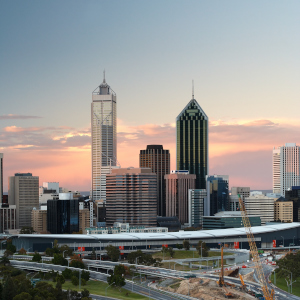State of Markets - VIC December 2014
The Victorian market is continuing to pick up speed.

In the year to September, growth in Melbourne property prices hit 8.1 per cent, according to RP Data. The city remains one of the country’s top performers, though it continues to lag behind Sydney.
Herron Todd White predicts conditions are strengthening as confidence returns to the market. The best performing suburbs are found in the east, including Mitcham and Burwood, which recorded growth of 13.2 per cent and 7.1 per cent respectively over the June quarter.
Certain areas are seeing rapid sales activity, according to the Real Estate Institute of Victoria. Data shows properties in Croydon South sell, on average, within 18 days of being listed. In nearby Croydon Hills and Kilsyth, time on market is as low as 19 days.
The northern suburbs are also enjoying an upswing. The REIV reports properties in Albion sold within 20 days in August 2014. This represents a drastic fall since August 2013, when properties took an average of 81 days to sell.
However, SQM Research warns growth may begin to wane in coming years. Based on the economy remaining strong and rates staying steady, the research firm predicts growth of just four to eight per cent in the Melbourne market over 2015.
Sustainability and eco-friendly features have been growing in popularity in Melbourne. Research by PRDnationwide suggests certain green features can even boost a property’s sales price – homes with a high energy efficiency rating sell for 51 per cent more than those with a low rating, the data suggests.
Melbourne has some of Australia’s most expensive real estate. Toorak was rated the suburb with the ninth highest median price in the country by RP Data. Homes in this blue-chip area sell for a median of $2,938,058.
Increasingly, prices are also creeping up in Victoria’s regional areas, particularly those near the city, the REIV reports. Barwon Heads, south of Geelong, has a median price of $690,000, above the median of Melbourne itself. Nearby Point Lonsdale has a median of $645,000.
Across the state, the REIV identifies seven other areas with a median price over half-a-million dollars, including Apollo Bay, Ocean Grove, Lake Wendouree, Torquay, Gisborne, Macedon and Woodend.
Investors should not be fooled by Caulfield East’s Edwardian character – the infrastructure around this inner-city suburb is solid. The area is situated only 10 kilometres from Melbourne’s CBD and offers easy access to the city’s train lines.
Investors are attracted to the suburb’s small size, and its tightly-knit communal atmosphere. This feeling is further perpetuated by the suburb’s high proportion of family homes, and its close proximity to communal amenities like Caulfield Racecourse.
Caulfield East is historically known for housing an extensive Jewish community, with a large influx of this group after the Second World War. Today, the suburb is increasingly popular with city professionals who want easy access to the CBD.
Whilst you get a sense that Caulfield East is moving with the times, its high proportion of well-preserved 19th century homes helps retain its sense of class. The ornate architecture, solid furnishings, and spacious floor plans of these properties will always remain popular with buyers.
If investors are put off by the heritage overlay of period properties, then they should explore Caulfield East’s other investment opportunities, like the suburb’s numerous 1960s and early 1970s homes. They are of a much better quality build than properties of a similar age in areas like Doncaster and Mitcham.
Investors have achieved great success by converting these properties into town houses. The suburb’s potential does not stop there either – developers with a large amount of capital should not rule out building in Caulfield East.
Developing would involve paying upwards of $1.5 million for a plot of land and working around the suburb’s overlay restrictions. But, given the area’s positioning in the city, the potential for long-term gains is there.
Currently, the high proportion of owner-occupied homes prevents rental yields from reaching their full potential. However, some sources estimate that Melbourne’s population will outgrow Sydney’s by 2050.
If this occurs, it is likely that property values in inner-city suburbs like Caulfield East will become increasingly competitive as the demand for housing outgrows supply. The biggest factor in the suburb’s future success, therefore, is the government’s policy with regard to immigration.
In outer suburbs, house prices could fall due to unemployment, especially with the departure of heavy industry companies. Caulfield East is situated near the centre of a populated city, so prices should remain resilient even if immigration declines.
Fast 5 Hotspots
Glen Huntly